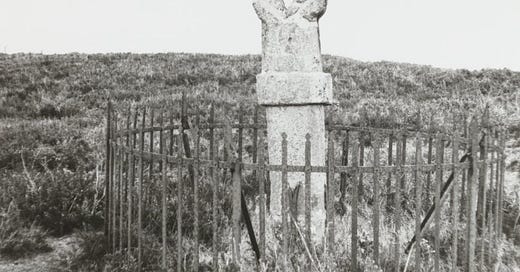The Significance of The Earl's Cross in Dornoch, Scotland
Nestled in the historical landscape of Dornoch, the Earl's Cross stands as a testament to the rich and tumultuous history of the Scottish Highlands. While its origins are often linked to the Battle of Embo, fought around 1259, the cross itself represents more than just a single event; it embodies centuries of heritage, valor, and the enduring spirit of the people of Sutherland.
Historical Background
The Battle of Embo saw William, the first Earl of Sutherland, lead his forces against Scandinavian invaders. The victory was significant, as it temporarily halted the Norse incursions that plagued the region. Traditionally, it is believed that the Earl's Cross was erected to commemorate this victory. However, evidence suggests that the cross, as it stands today, belongs to a much later period.
Architectural Description
Located at coordinates NH 8044 9040, the Earl's Cross is a striking monument. Standing at 7 feet 3.5 inches high, it features a tall shaft that expands at the head, where a triangle of stone, perforated in the center, sits. This fragment is a remnant of the original crosshead, which was circular with arms extending to the margins and perforations between them.
The shaft of the cross is chamfered along its edges, and at 4 feet 1 inch above the ground, there is a projecting band measuring 10 inches deep. This band is adorned with shields on its eastern and western faces. The eastern shield bears three stars of five points, arranged two and one, symbolizing the Earl of Sutherland. The western shield, although now indecipherable, was noted by historian Cordiner to have displayed the armorial ensigns of Caithness. The shaft measures 1 foot 6 inches in breadth and 8.5 inches in thickness, with the cross oriented to face east and west.
To protect this historic monument, it is now enclosed within an iron railing, preserving it for future generations to appreciate.
Cultural and Symbolic Importance
The Earl's Cross serves not only as a memorial to a specific battle but also as a symbol of the broader struggle and resilience of the Scottish people. The cross's association with the Earl of Sutherland highlights the noble family's pivotal role in defending the region against external threats. The use of heraldic symbols on the cross underscores the importance of lineage and legacy in Scottish history.
The Legend of Clach-an-righ
Interestingly, another stone, known as Clach-an-righ, once marked the site where the Norse leader fell during the Battle of Embo. Although this stone is no longer extant, historical accounts describe it as similar in appearance to the Earl's Cross. Clach-an-righ stood about a mile from Dornoch at Embo and was noted for the "divers burials" visible beside it during the reign of James VI.
Preservation and Legacy
The Earl's Cross has been visited and documented by numerous historians and archaeologists over the centuries. Despite some damage and the loss of related monuments like Clach-an-righ, the Earl's Cross remains a focal point for those interested in Scotland's medieval history. The cross's detailed inscriptions and design continue to offer insights into the artistry and symbolic language of the time.
Today, visitors to Dornoch can reflect on the turbulent history commemorated by the Earl's Cross. It stands not just as a marker of a past battle but as a lasting emblem of Scottish heritage and the enduring power of memory.
Conclusion
The Earl's Cross is more than a relic; it is a bridge to the past, connecting modern observers with the bravery and determination of those who came before. As we look upon this ancient monument, we are reminded of the sacrifices made and the victories won, not just in battle but in the ongoing preservation of history and culture. The Earl's Cross thus continues to inspire and educate, a silent yet powerful witness to the rich tapestry of Scottish history.





